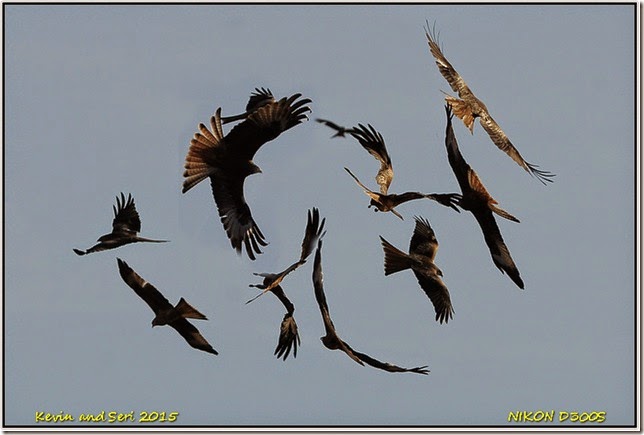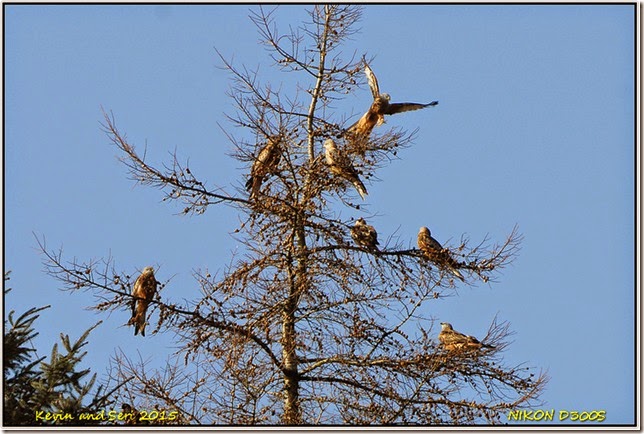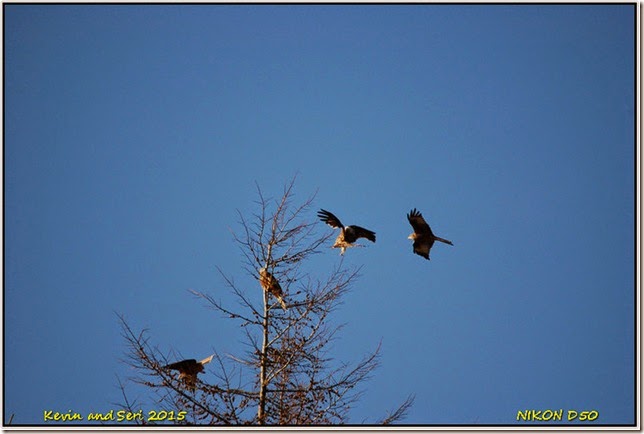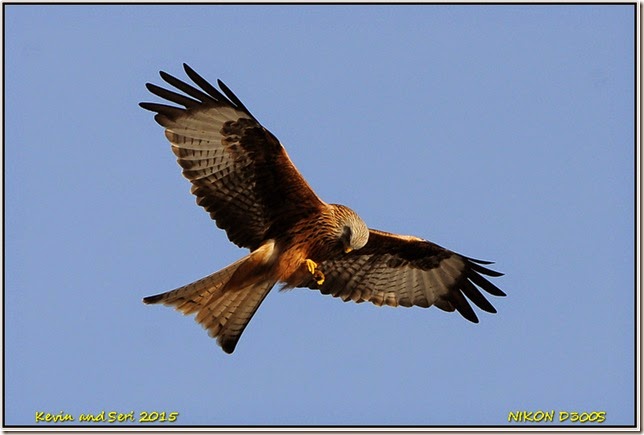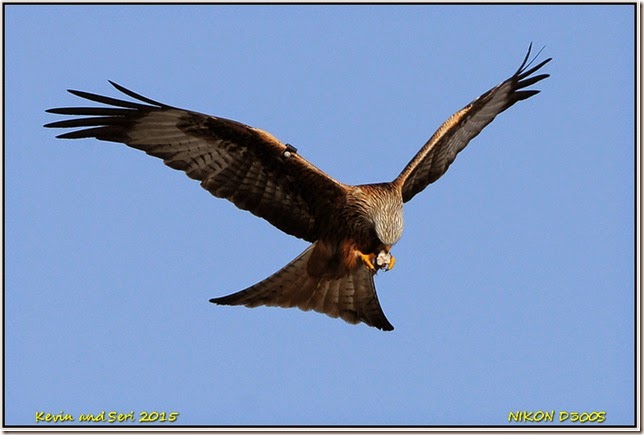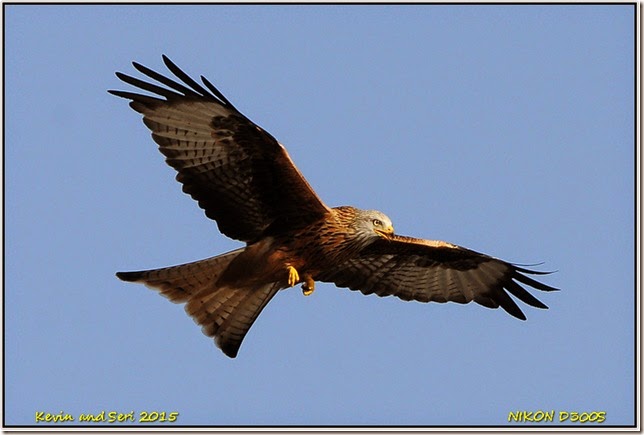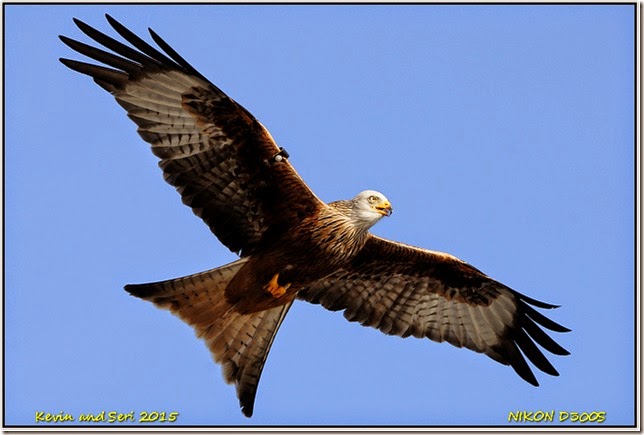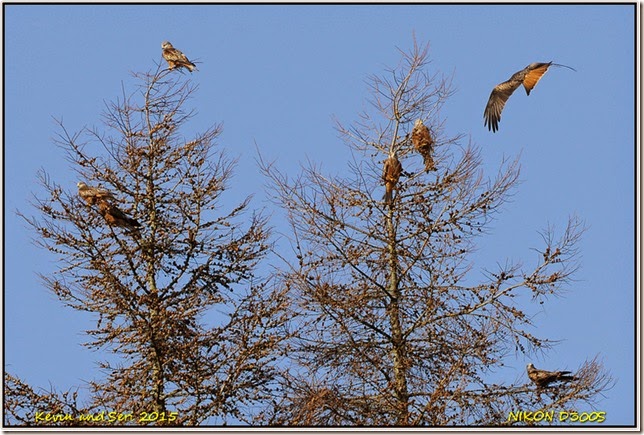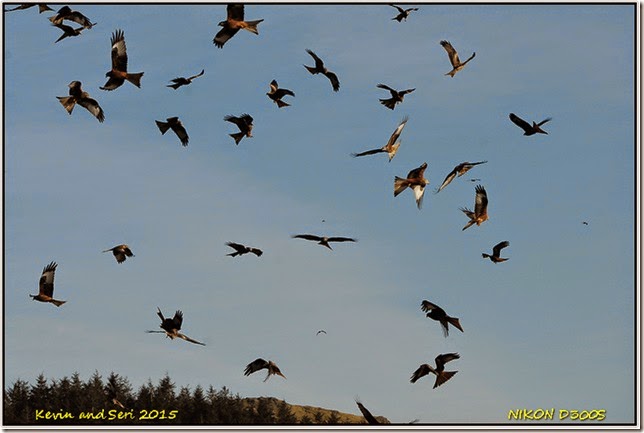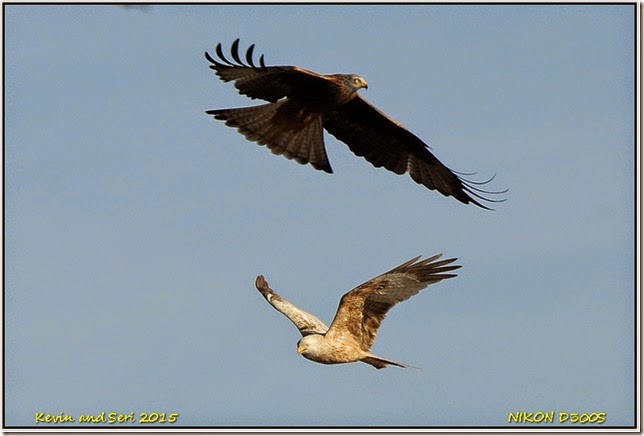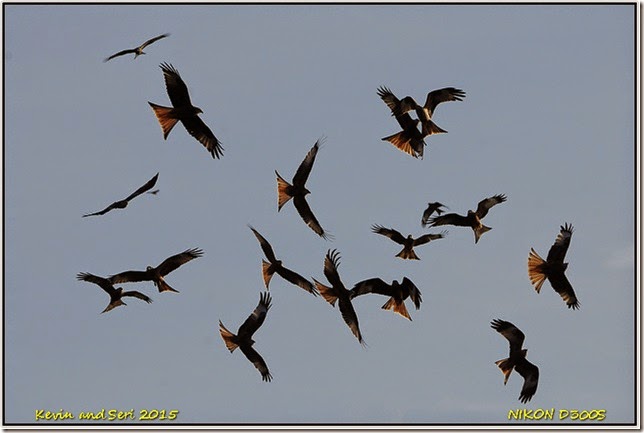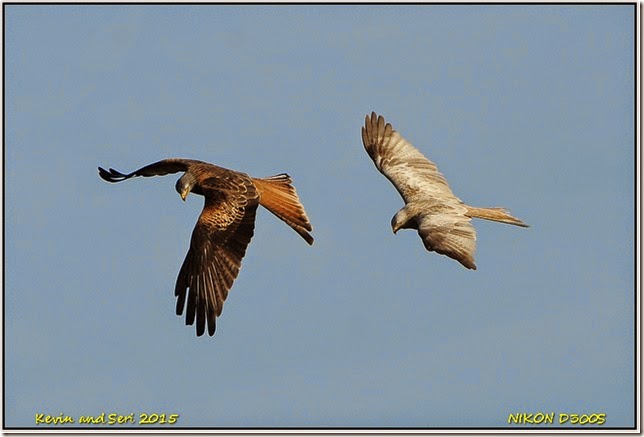“Why, what’s the matter,
That you have such a February face,
So full of frost, of storm and cloudiness?”
~Shakespeare ‘Much Ado About Nothing’~
So here we are at the beginning of February. Where did January go? With the damp, chilly weather, short, dark days and post Christmas blues to contend with, January, named after the Roman god Janus, don’t seemed to be anyone’s favourite month. So lets see what February brought us, so far. February was the soul’s month … a month of whispered hopes. The month where we could turn our faces to the promises of Spring, even amidst Winter still raging on our doorsteps. The crocus, alliums, tulips and daffodils were pushing their shoots out of the soil. I kept reminding them that it was still Winter and to stay snuggled beneath their blanket of earth. But, they insisted on reaching out to feel the warmth of the sun.
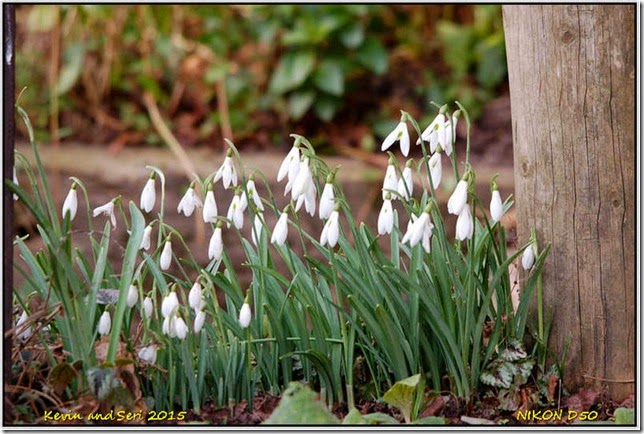
If winter comes, can Spring be far behind?
~Percy Bysshe Shelley~
We celebrated February by making a trip to Slimbridge WWT again. The Bird festival was on and it was also another good run for the car. Killing 2 birds with one stone came to mind. As soon as we arrived, there were traffic marshals directing the cars. I guess they were expecting a bumper crowd. I took a programme to see if there was anything that might interest me but unfortunately, the talks were not up my street. So we decided to do our own thing and checked out the hides. At the Rushy hide, Bewick’s swans, Pintails, Shelducks and Pochards were all enjoying a siesta.
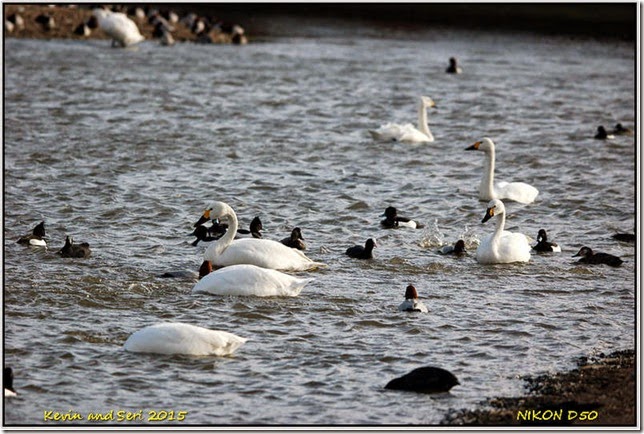
Then we checked out all the hides overlooking the tack piece. In each hide, there was a guide to answer any queries from the visitors. According to the board, there were 2000 displaying Lapwings, 100 Golden Plovers, 600 Dunlins, 1400 whistling Wigeons, 400 dabbling Teals, 40 surface-feeding Shovelers, 6 graceful Common crane, 15 Redshanks, diving Pochards, Pintails, Mallards and Tufted ducks. Territorial Mute Swans were busy chasing away any young ones. They looked impressive and aggressive with puffed up feathers cruising the lakes. Babe spotted this hybrid feeding in front of the hide. We were very surprised that no one, not even the guide, spotted it.
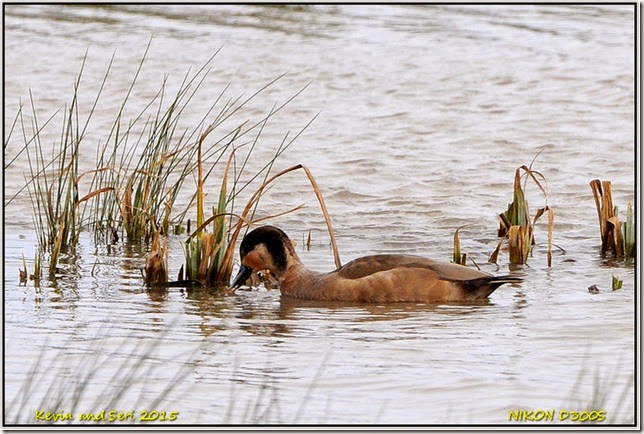
We’d didn’t stop at Willow Hide on the way up because it was standing room only. The Water rail must be showing off again. On the way down, we managed to squeeze in. Reed buntings, Chaffinches, House sparrows, Robins, Wood pigeons, Blackbirds, Goldfinches, Greenfinches, Great and Blue tits were taking turns on the bird-feeders. They were queuing (im)patiently by the fences and nearby trees. Long-tailed Tits were also foraging through the bushes but trying to get a clear shot as they flit from perch to perch was a challenge. But, not the Water rails. They were out and about, delighting the on-lookers.
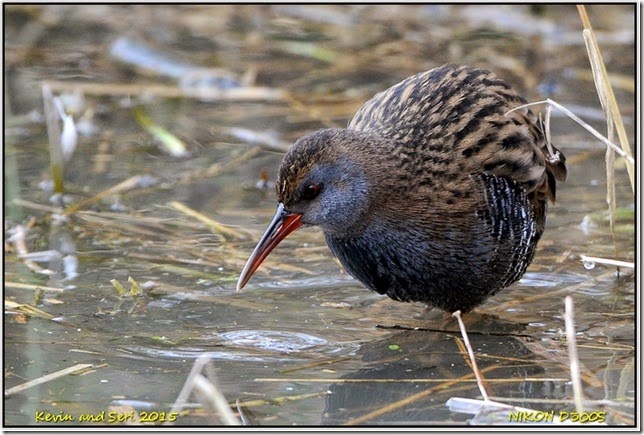
After getting our ration of shots, we walked back into Robbie Garnett hide because we heard the cranes bugle-like calls echoing around us. We’d seen photographs of them getting frisky and was hoping to see some action. But unfortunately, not today. They were just calling to each other and the sounds were so atmospheric and really raised the spirits on such a dreich day. On the way out, we stopped before the tunnel to see if our favourite bank vole was in. Yes … he popped out to say hello, nibbled a few tit-bits, posed for photographs and then disappeared back into its home.
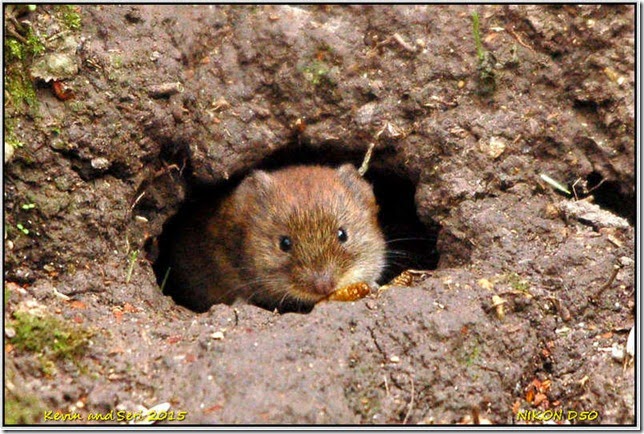
We walked past the Asian pen to see if the Ferruginous duck was in but not today. She’d been very mobile flying from one pen to another. We headed straight to the South finger reed-bed because the Bittern had been spotted earlier. Again, no dice. We nipped at Van de Bovenkamp hide, and spotted a Kestrel hunting. A pit stop at the Kingfisher hide where 2 huge brown rats entertained the visitors. We didn’t stay long and walked towards Zeiss hide where the grounds were covered with clumps of Snowdrops, one of my favourite flowers. At a time when we most needed a sign that the season was changing, this tiny bud blooms, penetrating the gloom, glimmering pure snow white in the shadows under the trees with promises that spring was on its way.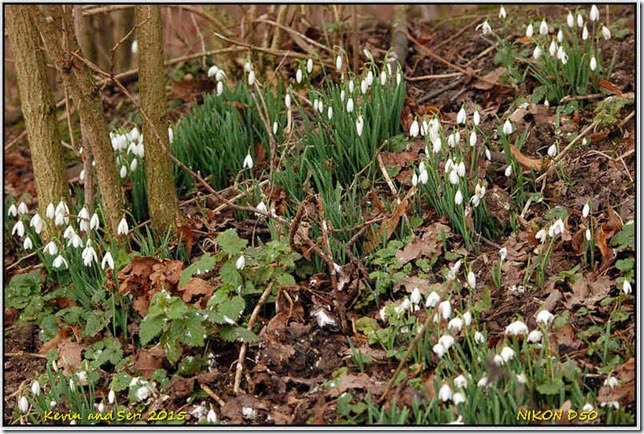
We then walked through the world wetlands and revisited all the different lagoons and pens and getting reacquainted with the various wildfowl and waders. The wardens have moved some of the residents to a new pen but some of them just waddled from one end to another. So we do find it hilarious that a Mandarin duck from the Asian pen splashing about in the South American corner. We had to wade through the different geese begging for seeds from Geese of the World section to get to Hogarth hide. The hide was very quiet. The weather was starting to turn that we decided to call it a day.
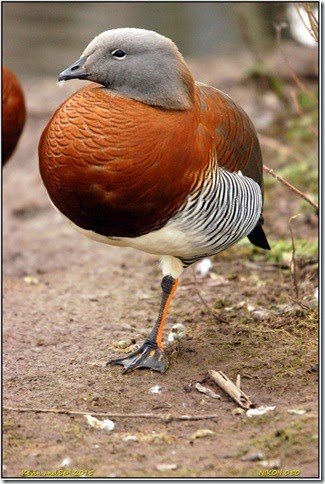
Whither, 'midst falling dew,
While glow the heavens with the last steps of day,
Far, through their rosy depths, dost thou pursue
Thy solitary way?
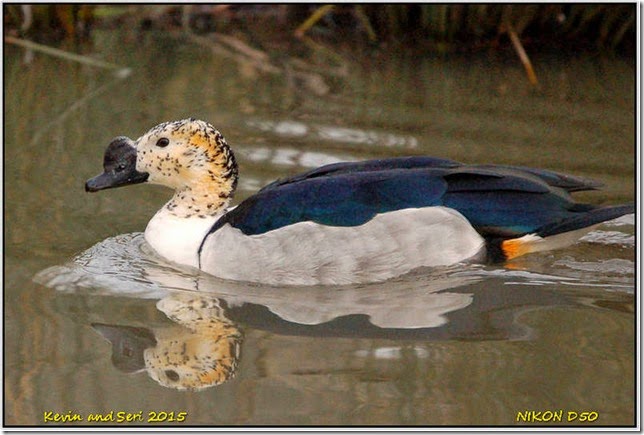
Vainly the fowler’s eye
Might mark thy distant flight, to do thee wrong,
As, darkly seen against the crimson sky,
Thy figure floats along.
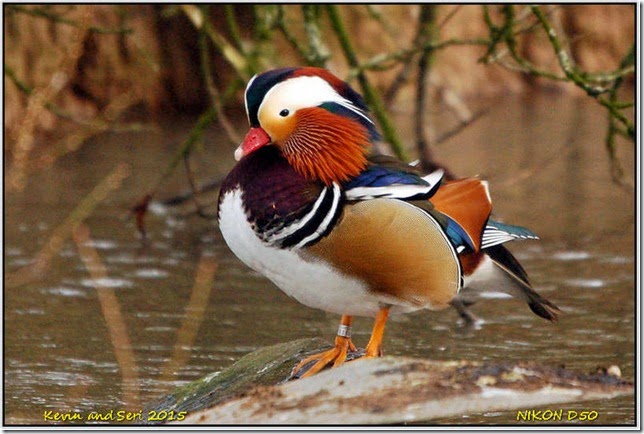
Seek’st thou the plashy brink
Of weedy lake, or marge of river wide,
Or where the rocking billows rise and sink
On the chaféd ocean side?
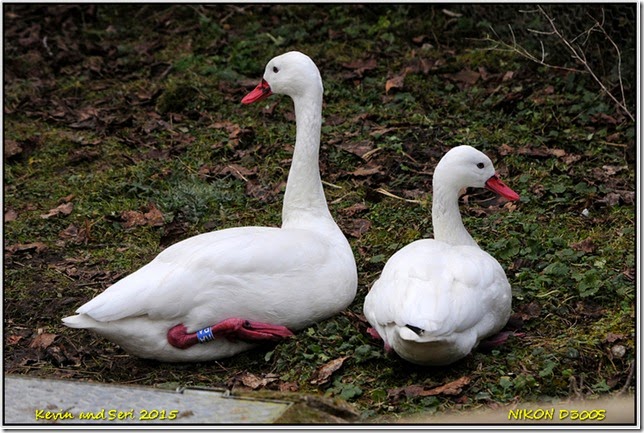
There is a Power, whose care
Teaches thy way along that pathless coast,—
The desert and illimitable air
Lone wandering, but not lost.
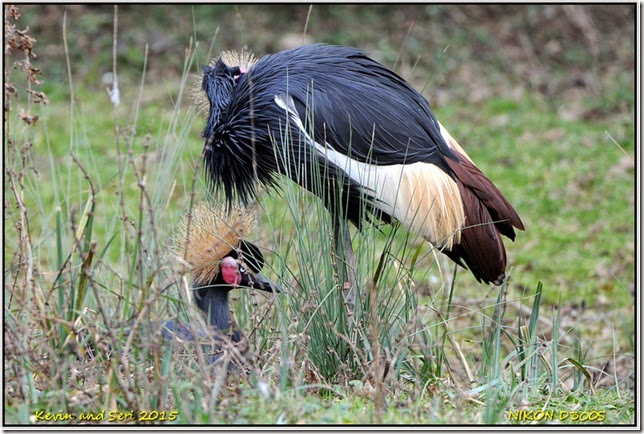
All day thy wings have fanned,
At that far height, the cold thin atmosphere;
Yet stoop not, weary, to the welcome land,
Though the dark night is near.
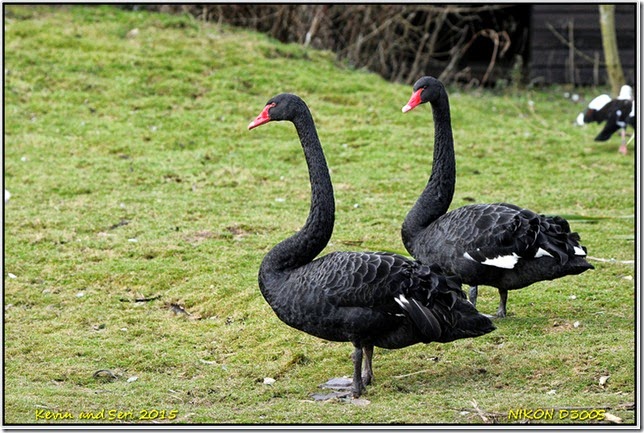
And soon that toil shall end,
Soon shalt thou find a summer home, and rest,
And scream among thy fellows; reeds shall bend,
Soon, o’er thy sheltered nest.
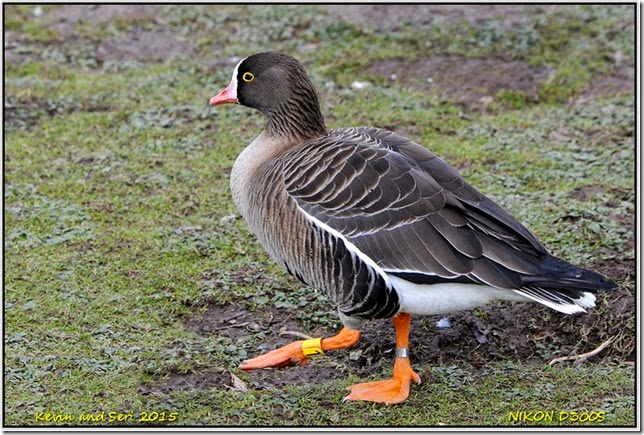
Thou’rt gone, the abyss of heaven
Hath swallowed up thy form, yet, on my heart
Deeply hath sunk the lesson thou hast given,
And shall not soon depart.
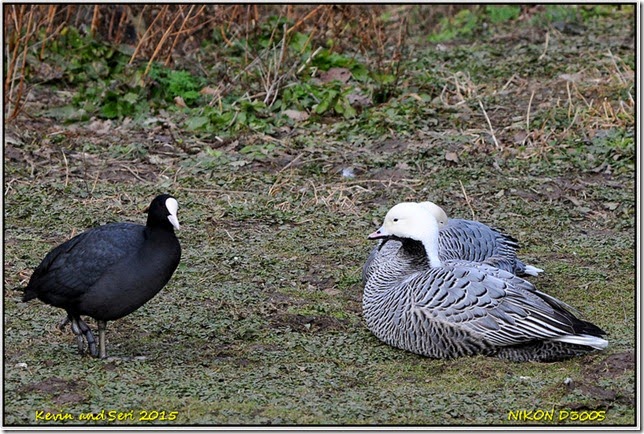
He, who, from zone to zone,
Guides through the boundless sky thy certain flight,
In the long way that I must trace alone,
Will lead my steps aright.
~William Cullen Bryant ‘To a Waterfowl~
We also finally managed to make our annual trip to one of our favourite place in the world, Aberystwyth. Babe had been looking at the weather forecast to make sure the trip was safe especially with a new car. It was very grey driving through Birmingham with a pit stop at Telford. We saw a flock of Redwings at the roundabout but Babe didn’t want to stop. It was very foggy around Shrewsbury. The numerous roundabouts had been broadened with filter lanes. Clumps of snowdrops were peeping from the undergrowth in Shropshire. We drove through Welshpool where snow capped Long Mountains loomed beside us. The weather brightened up as we got closer to Aberystwyth where spring lambs were gambolling in the sunshine.
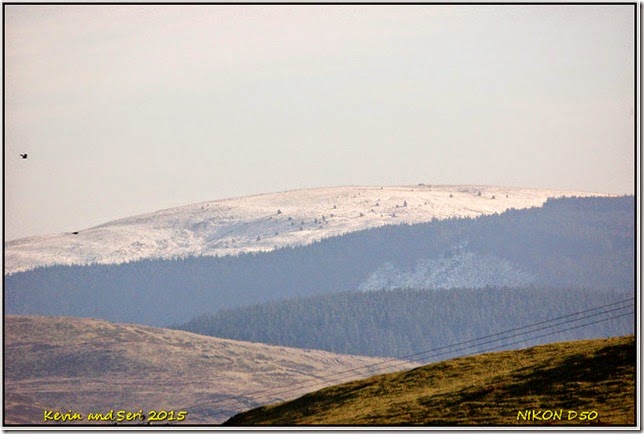
We drove straight to Bwlch Nant yr Arian Forest reserve centre. Unsurprisingly, it was buzzing. After weeks of Siberian weather, we were treated to a touch of spring with balmy temperatures. This centre was now very popular with cyclists and walkers. It was the tail end of winter as there were still snow in the surrounding hillside. The place looked like a site of mass destruction as the trees were being cut down due to the larch disease, a pathogen that had killed whole swathes of forests. These felled trees were left on the ridges because transporting them meant transporting the diseases. Since there was plenty of time, we’d our sandwiches and washed down with hot coffee. We looked up and the Red Kites were circling and gathering in the skies, waiting in anticipation. Among them, we spotted a Buzzard sneaking into the circle.
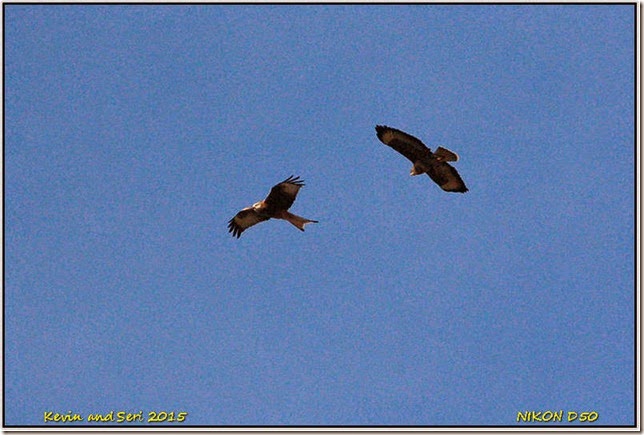
We checked out the bird-feeder outside the visitor centre. Only Chaffinches, Tree sparrows, Great and Blue tits were feeding. Where were the Siskins? I was also hoping to see a Brambling because Babe managed to photograph a blurred one speeding across the sky. We walked down towards the lake where Tree sparrows were busy chirping away in the hedges. The lake was frozen and next to it, midges danced in the light like tiny fairies. While waiting for the show to start, people were skimming stones and panes of ice across the lake which made a lovely tinkling sound. But we were busy photographing these magnificent birds flying in and perching on the coniferous trees that lined the top of the hill. What an amazing sight.

Bwlch Nant yr Arian became a feeding station in the winter of 1999. It was designed to give these magnificent birds a helping hand and encouraged them to gather together, a natural behavioural pattern. At the moment, the skies resembled a Heathrow holding pattern as they circled and jostled for the best position.These kites were fed daily, at 2 pm in winter and 3 pm in summer which was confusing for us but not the birds. They were fed off cuts from a local butcher. These off cuts were scattered out on to the grassy feeding area on the lakeside. Then the aerial acrobats began. They swoop down to pick a piece and ate them on the wing while others were swirling in a vortex above waiting for their chance. Their calls were long, high pitched whistles, like a shepherd’s whistling.
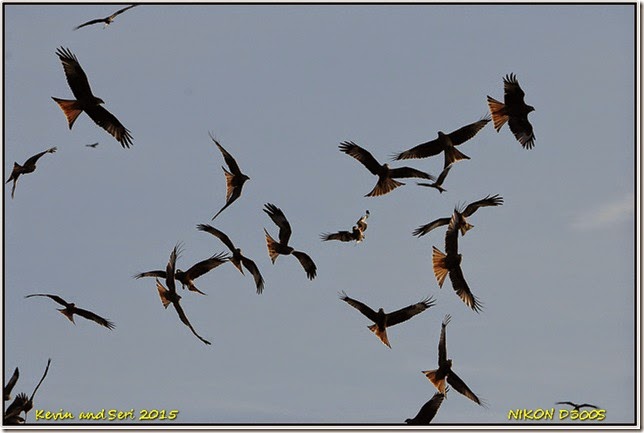
These red kites or Barcud coch in Welsh were mostly local from about a 10-mile radius. We were very excited to see a ‘white kite’ on the ground. Its colouring was very pale, almost white, due to a genetic default known as leucism. It was easy to see it on the ground but quite hard when it was flying with the rest, especially when the sun was shining at the wrong place. A few pieces of meat dropped on the frozen lake and I was hoping that one might missed and started sliding but they were so skilful. As they swooped low over, their talons stretched out and fished the meat in a flash. There was the chase, like aerial pirates, trying to snatch the meat from each other. Then, slowly they dispersed but often they sailed low over our heads, for the final pose.
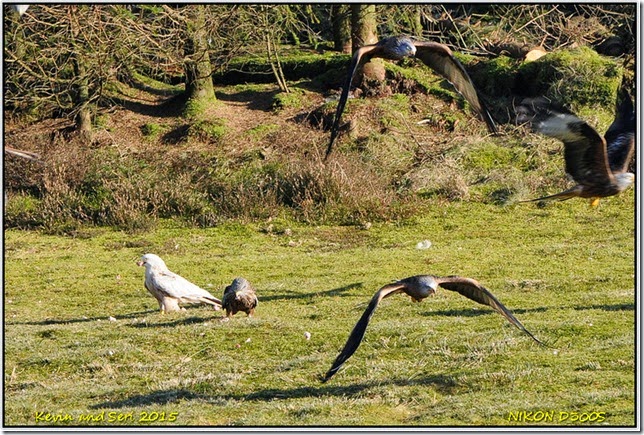
There were so many gorgeous photographs of these Red Kites that I have uploaded another posting just on them. It’s photograph overload galore. You have been warned :-)
After all the excitement, we chilled out with a drive to Borth to see if Cantref Gwaelod had risen again. They need to do something about the gravel road into the car-park. There wertr more potholes than gravel. It was that bad. We walked along the sea defences towards the stumps to see how much of the sunken ancient forest was exposed. They had been covered again. There was a lot of heavy work going on along the coast and these might have affected on the conditions of how these stumps were exposed in the future. We saw a pair of Oyster catchers feeding by the sea line. We crept closer to a Golden Plover on the mudflats but it was chased off by a dog.
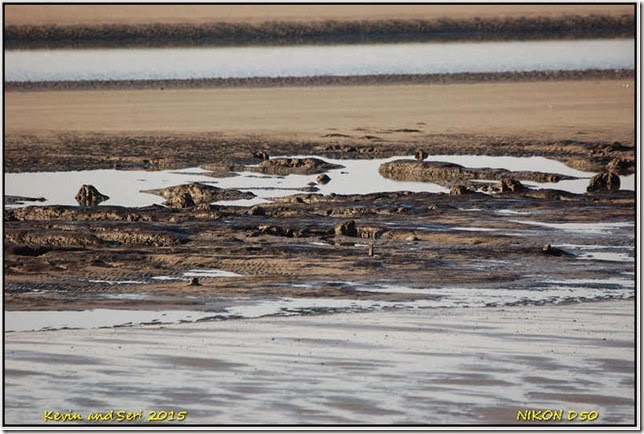
Our final destination was Aberystwyth, where the land met the sea. It was lovely, bright and sunny bringing in the crowds. We drove slowly along the promenade for a parking space and was lucky to find one outside the Old College. We walked up and down, breathing the familiar sights, sounds and smells. Oh, how I missed this quaint town where once you arrived, you never wanted to leave. We’d to leave for job opportunities but we always make a point to return at least once annually. Since we’d plenty of time, I went to get a bag of chips for our own little picnic in the car by the sea. Chips by the sea was a must.
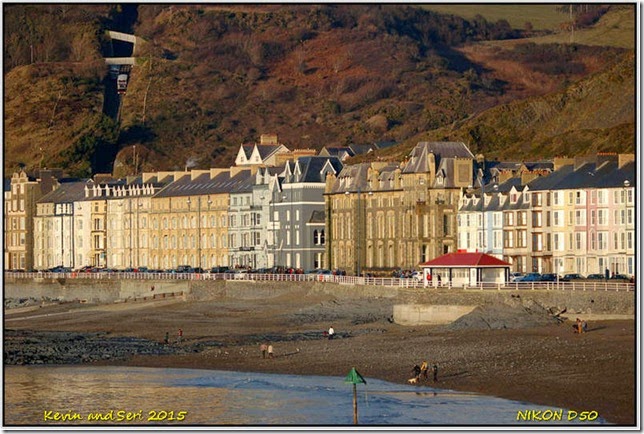
As the sun began to sink, there was a warm glow in the sky. Visitors and locals were staking their place by the railings. We didn’t have to wait long when the first flock started whirling in and swooping over the seafront. Then more and more began to gather. The skies above us was darkened by thousands of starlings chirpings and the whoosh of their wing beats as they flew overhead . Hoods up and umbrellas opened just in case of any aerial bombardment :-0. Unfortunately, there was no murmuration, no acrobatic displays. Perhaps … they’d a hard day and just wanted to sleep. Dozen of flocks flew in circled a bit and whoosh went under the pier. It was like they were being sucked in. The noise from the birds under the pier was unbelievable aloud. I guessed it was getting very crowded as more and more jostled. We didn’t stay long because Babe wanted to be out of Wales onto the motorways before the roads iced over.
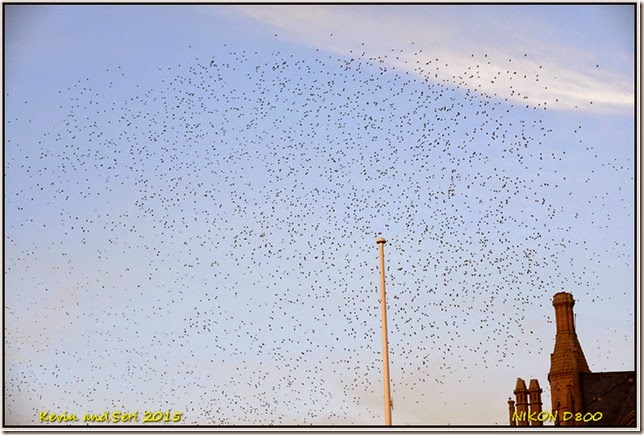
We're starlings, the misses, meself and the boys,
We don't go round hopin', we walks.
We don't go in for this singing all day,
And twittering about, we just squawks.
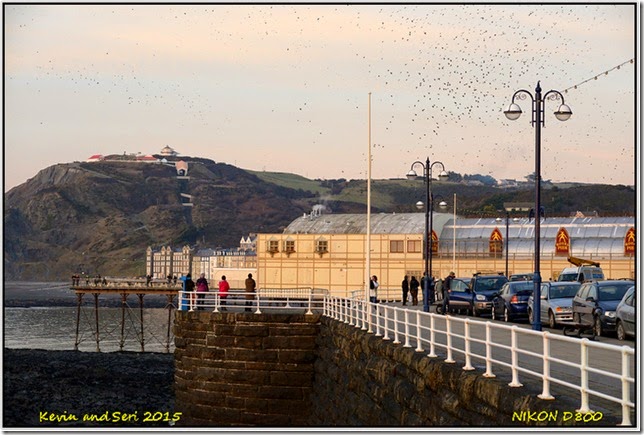
We don't go in for these fashionable clothes,
Like old Missel Thrush, and his spots,
Me breast isn't red, there's no crest on me head,
We've got sort of, hardwearing...dots.
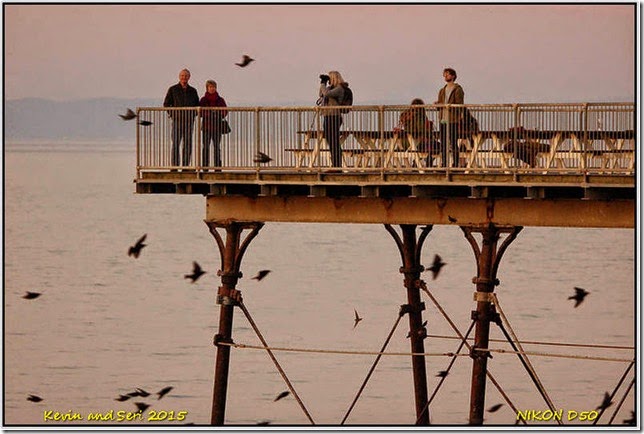
We starlings, the misses, meself and the boys,
We'll eat anything that's about,
Well anything but that old half coconut,
I can't hold it still. I falls out.
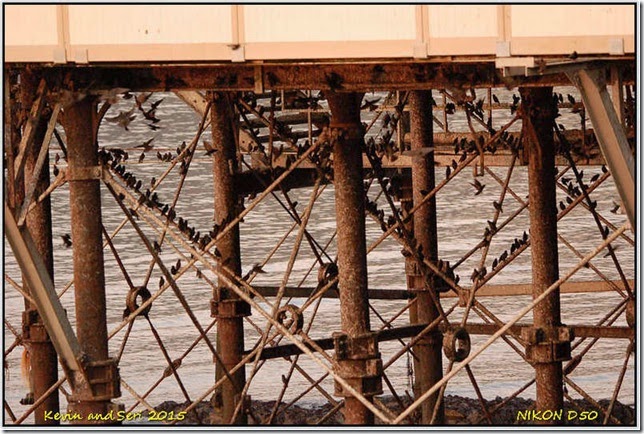
What we'd rather do, is wait here for you,
To put out some bread for the tits,
And then when we're certain, you're there by the curtain,
We flocks down and tears it to bits.
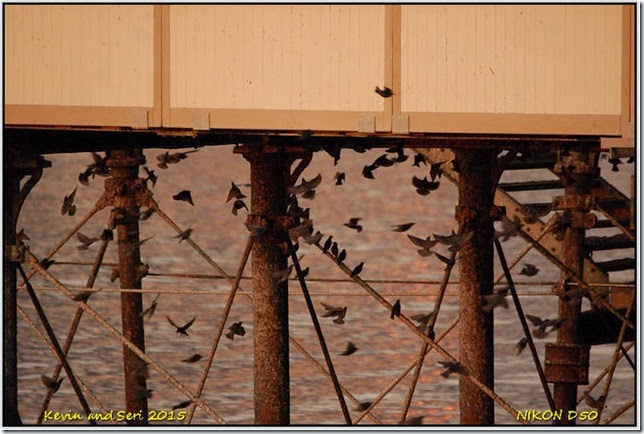
But we starlings, the misses, meself and the boys,
We reckon that we're being got at,
You think for two minutes, them finches and linnets,
You never sees THEM being shot at.
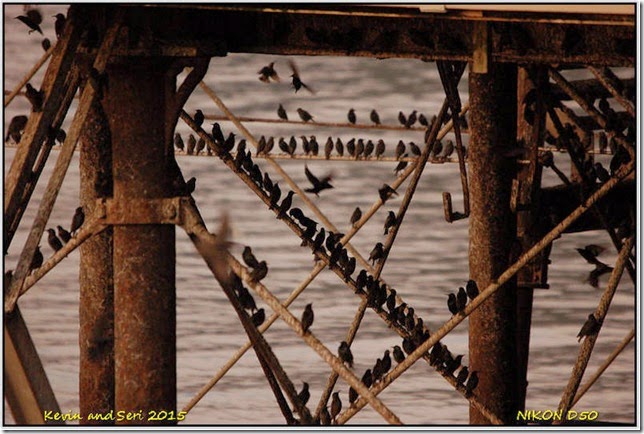
So the next time you comes out to sprinkle the crumbs out,
And there's starlings there, making a noise,
Don't you be so quick to heave half a brick,
It's the misses, meself and the boys!
~Pam Ayres, Starlings~
As we were busy packing away our cameras into the car, something spooked the birds and thousands flew out and made amazing mumurations out in the sea. Aaah… it was very tempting to take everything out. But, we’d a long way to go and it was beginning to turn dark. Never mind, next time or next year I guess, because it was nearly Spring and they will fly back to wherever they came from. We managed to get out of Wales safely in record time. On the motorway, salt spreaders and gritters were busy at work. It was going to be a very cold night.
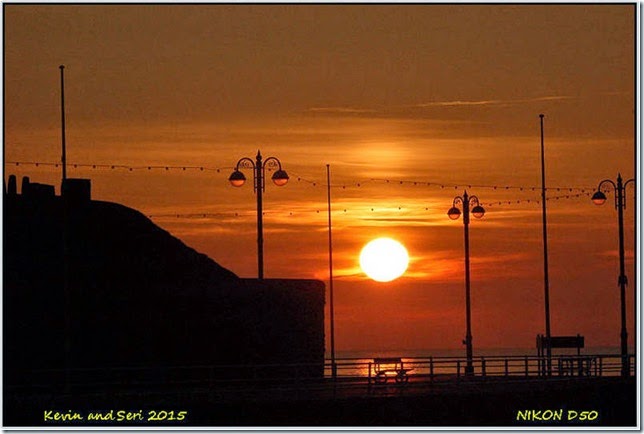
The next day, we went for a drive to Draycote waters to stretch our legs and also took the opportunity to check out the Black-necked grebe which had been sighted there. As usual, the reservoir was buzzing both on the path and in the waters. There was a sign that the main car-parks were full and to use the overflow car-park which was at the bottom of the reservoir. Since we saw a few cars leaving, we decided to try our luck and found a space to park. It was a hard walk uphill if we were to park at the overflow car-park.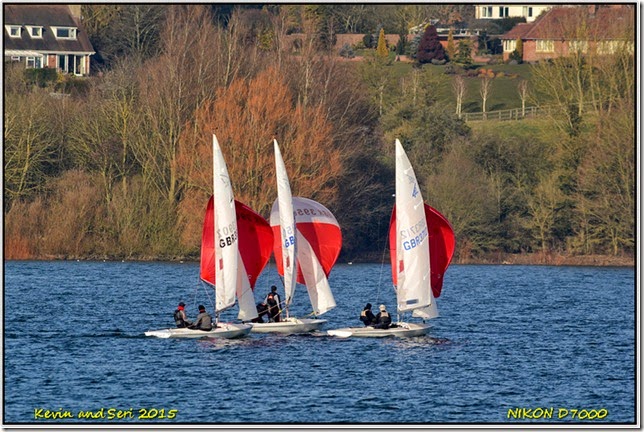
It was freezing and very windy at the reservoir but that didn’t deterred the joggers, cyclist. walkers, twitchers and photographers on land and these hardy sportsmen in the water. It was a very spring-like day and everyone want to enjoy it. Although it was eyewateringly cold, the skies were blue and the sun was out. Along Farborough Bank, I photographed every Little Grebe that I came across just in case but so far the piece de resistance eluded me. But, not to worry. There were plenty of things to keep me busy.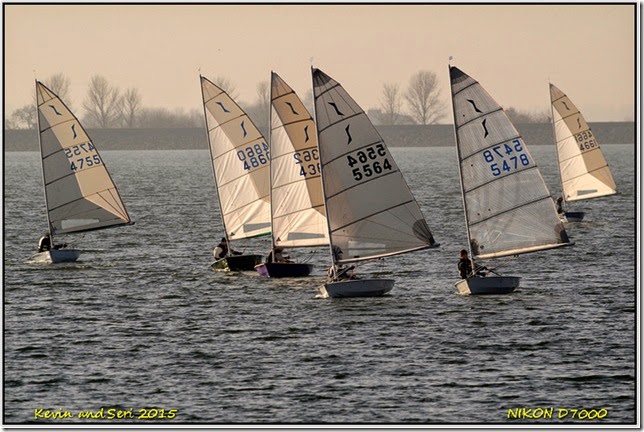
Below the bank, on the scrape field, a herd of sheep were feeding to the delight of the children who flocked close to the fence. A flock of Meadow pipits were seen lingering about near the sheep but quickly flew off. Pied wagtails with their undulating flights and delightful calls were flying around us. In the water, Great Crested Grebes were starting to change into their summer plumage. We must remember to come more often to see their spectacular mating dance. Then a pair of Golden Eyes appeared in front of us and they were mating. Whoop…whoop. Unfortunately, we forgot to take a photograph….
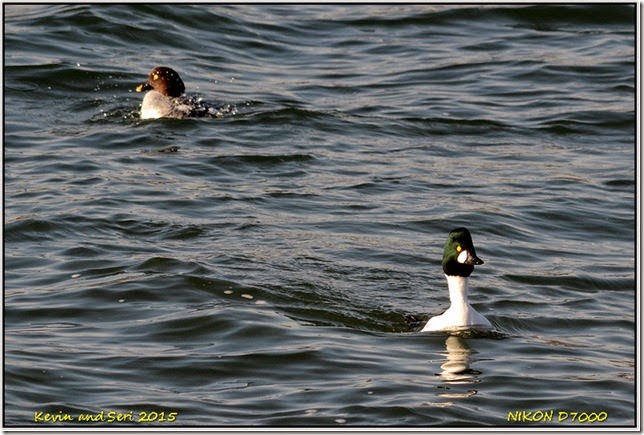
We met a few photographers and twitchers and bantered a bit. One couple had seen the Black-necked Grebe along the same path we walked and told us that we might had just walked past it. Nooooo…. They’d seen the Smew and the White-Fronted Goose and the Pink-footed Goose ... Well, they walked the whole stretched and we often only managed a quarter of it. We headed towards the hide and since we could see that it was full, we sat on one of the picnic benches. From here, we could see hundreds of Great crested Grebes having a siesta by the inlet. From time to time, Teals were being flushed out of the water.
Then it was time to head back to the car. We walked past more Golden Eyes, Coots, Tufted ducks, Gulls, Great Crested Grebes, Little Grebes and … hang-on, it was the Black-necked Grebe. Whoop…whoop…my first sighting. All you could hear were our cameras rattling away. We stood there watching this grebe with its dusky grey neck and beautiful golden tufts of feathers on its face. The forehead was steep with smudgy markings and an upturned bill. And the eyes, the striking Dracula red eyes.
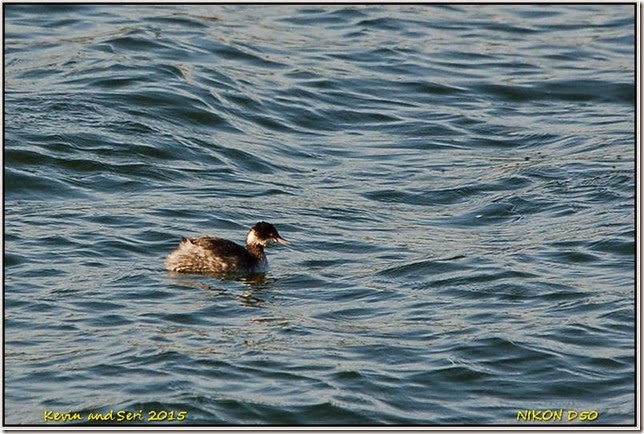
They were very rare nesting birds in the UK and were mainly passage migrants from Russia. They were almost flightless for around 9 months of the year, the longest period of any flying bird. A bit of a contradiction since they managed mammoth migrations to and from their breeding grounds each year. And despite having poor flight muscles, Black-necked grebes were super swimmers and divers, preferring to hit the water rather than take the skies to avoid danger. While we were busy admiring and photographing, we attracted quite a crowd asking what were we looking at. Duh… Again, we must have ‘Librarians’ written on our foreheads. After showing them what it was, we quickly left and let them sort themselves out.
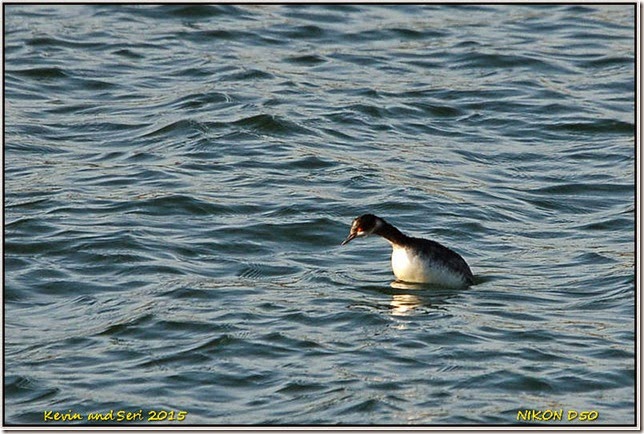
They say it escaped from a cunning-man’s coop,
dived into air one midwinter and left him
without spell or sight – to live unseen
in its own season behind the wind and water,
waiting for the right crack of light to make
its crystal feather – the black and rufous thing you see.
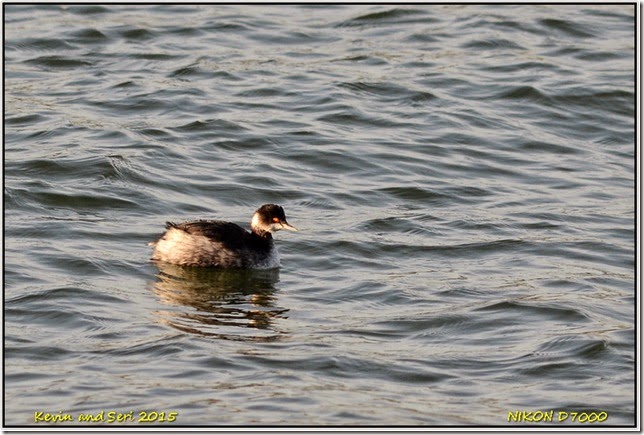
I once came close. Heard its whistle shear
off into the world that dogs can hear –
that brings them running or drives them mad.
What I’d give for a gold quill dropped
from its head, or what the old man heard it whisper.
On the Fal, in cold weather, they come to pan for its eyes.
~Black-necked grebe by Gregory Leadbetter~
At work, one of my colleagues was leaving us for greener pastures. As usual, we found it a very good excuse to have an outing for lunch. I gave her 3 restaurants to choose from and she picked Harringtons-on-the Hill in Kenilworth. The 7 of us bundled into another colleague’s people carrier and off we go on our adventure. The restaurant was about 20 minutes away. It was easily located in a picturesque bow fronted cottage opposite Kenilworth castle. The place was full and we were allocated a table by the front window. Looking around, I noticed the place and decor was very rustic and had lots of character. The restaurant was on a smallish side with tables very close together. Ours was 2 different shaped ones joined together.
As soon as were seated, the lovely waitress took our orders. A jug of water and a plate of home-made bread came soon after along with our drinks. All of us ordered from the express lunch menu which included a complimentary glass of wine, orange juice or sparkling water. We went for the 3-course meal at £14.95. Since I’d e-mailed everyone the menu, we didn’t take long to order. I’d the salmon and dill fishcake with hollandaise sauce and poached egg for starter. Mine was the last to arrive and everyone gasped at the size. It was huge. There was quite a substantial waiting time between courses. My main course was grilled plaice with new potatoes, salad and herb butter. I wasn’t too keen on this. I ended the meal with creme brulee with shortbread biscuit which was delicious. We’d fun checking out each others plate. I’m glad that everyone enjoyed their meal and we toasted CC all the best for the future. And thank you Harringtons-on-the Hill for a superb meal. It was 8 out of 10.
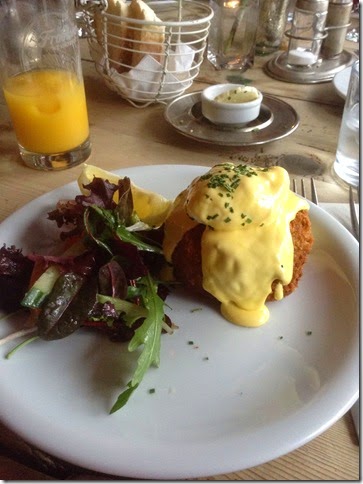
My colleagues and I also organised a surprise farewell party for CC. It was very challenging to organise one when she was in the same office but somehow we managed. A week before the party, the farewell card and collection envelope went AWOL. Aaah… but somehow I knew it must be with one of the ‘top boss’ and I was right. After that, I personally went to everyone who’d not signed. The list of food too was getting longer. The afternoon before, AM, WP and I got busy and arranged the room and decorated it with dozens of balloons which had been blown up by AM and JG. Thanks guys. On the day, at 11 am, everyone gathered and after a very short speech by our manager, and then CC, invited everyone to tuck in.
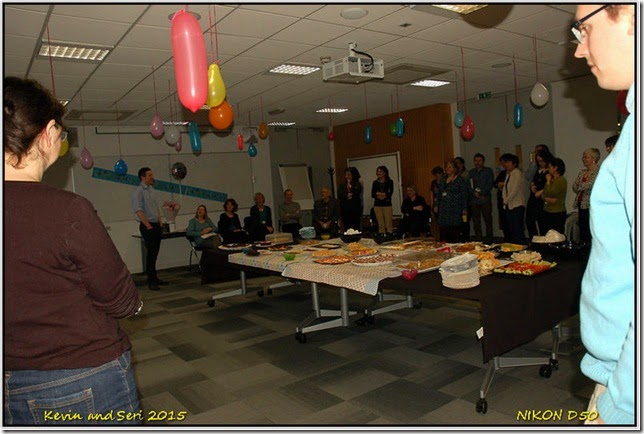
I was pleased that everyone was vowed by the dozens of balloons dangling from the ceiling. And off course, the amazing spread. Thanks a million to those who brought them in. JG brought lovely canapes of roasted beef in mini Yorkshire pudding with horse-radish, smoked salmon on rye bread and chocolatey yummy eclairs. AM with her assorted finger foods and grapes, WP with spicy samosas while EK brought soft drinks and chunky marshmallows. RC too brought soft drinks and GLW vowed with his retro pineapple and cheese sticks. I brought vegetable dumplings and spring rolls, which happened to be my signature dish. Everyone had a good time and by 2 pm we finally restored everything back to normal. To my partner in crime,
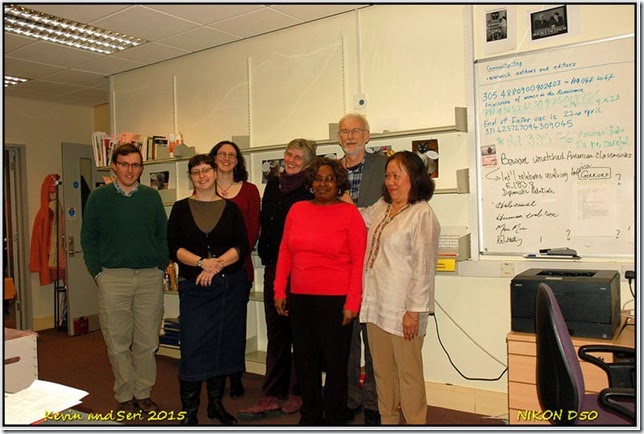
May you have the hindsight to know where you have been
the foresight to know where you are going
and the insights to know where you’re going too far
~Irish Blessing~
I had also been very busy this week helping another colleague with a petition to save Coventry libraries. The City Council had revealed its budget for the coming financial year including the closing of some of the libraries. There were 17 libraries in total and they wanted to turn them into 5 hubs!!! And the saddest thing was that there were 1.77 million visitor’s to the city’s libraries, an increase of 4.3%. Mobile library use too rose by more than a fifth. Campaigners in Finham, Stoke and Earlsdon had already started fighting to save their libraries. One more thing, Stoke, Earlsdon and Foleshill libraries were gifted to the people of Coventry by the philanthropist Andrew Carnegie in 1913. What will happen to these beautiful buildings which even survived the bombings?
I am a regular user of the Bell Green library, located in an area of deprivation and the facilities it offered, especially computer facilities, were essentials for underprivileged who lived nearby. It was always buzzing on the Saturdays when I am there. You can practically feel the brain-waves of different individuals, hard at work, doing and learning something. People from the young to the old coming in to return and borrow books. There were story telling and craft sessions. Adult education classes were run here plus reading and knitting groups. Those seeking employment use the computers for job-hunting and emailing their CV’s as everything were on-line. These various groups who meet at regular intervals will also have nowhere to go. Community spirit and friendship will be totally disrupted. William Sieghart’s Independence Library Report for England advised that libraries do more than simply lend book – they underpin whole communities. This Report could hardly expressed it more clearly :”the future of libraries as community hubs is essential for the well-being of the nation”.
I went round my neighbours to ask them to sign the petition. Then I roped in all the passengers in the bus that I travelled every morning. Last but not least, the ladies in my exercise classes. I left a few sheets in the community centre for anyone else to sign. And I was so impressed because when I came to collect a week later, they were all signed. Thank you so much. The community centre run all sorts of classes and activities from dance and religious classes, Bingo, scrabble club, SlimmingWorld, coffee mornings, youth clubs etc. The saddest thing was that all these 17 libraries can’t have the petitions in their buildings so it was up to us to do it for them.
Libraries were treasures of information and imagination and we must all join together to fight to keep all our libraries . We must be united to defend the services that matter to us and not be divided by the canker of austerity. If we fatally weakened this country’s network of libraries, big and small, we risk losing a whole generation of future reader and learners, those creative and curiously-minded people, from different backgrounds, on whom our future prosperity depends.
“To ask why we need libraries at all, when there is so much information available elsewhere, is about as sensible as asking if roadmaps are necessary now that there were so many roads”
~Jon Bing~
“Whatever the cost of our libraries, the price is cheap compared to that of an ignorant nation.”
~Walter Cronkite~
“They should be taking bonuses from bankers, not library books from school children. What kind of society are we building?”
~Sara Sheridan~
“Civilised nations build libraries; lands that have lost their soul close them down.”
~Toby Forward~
